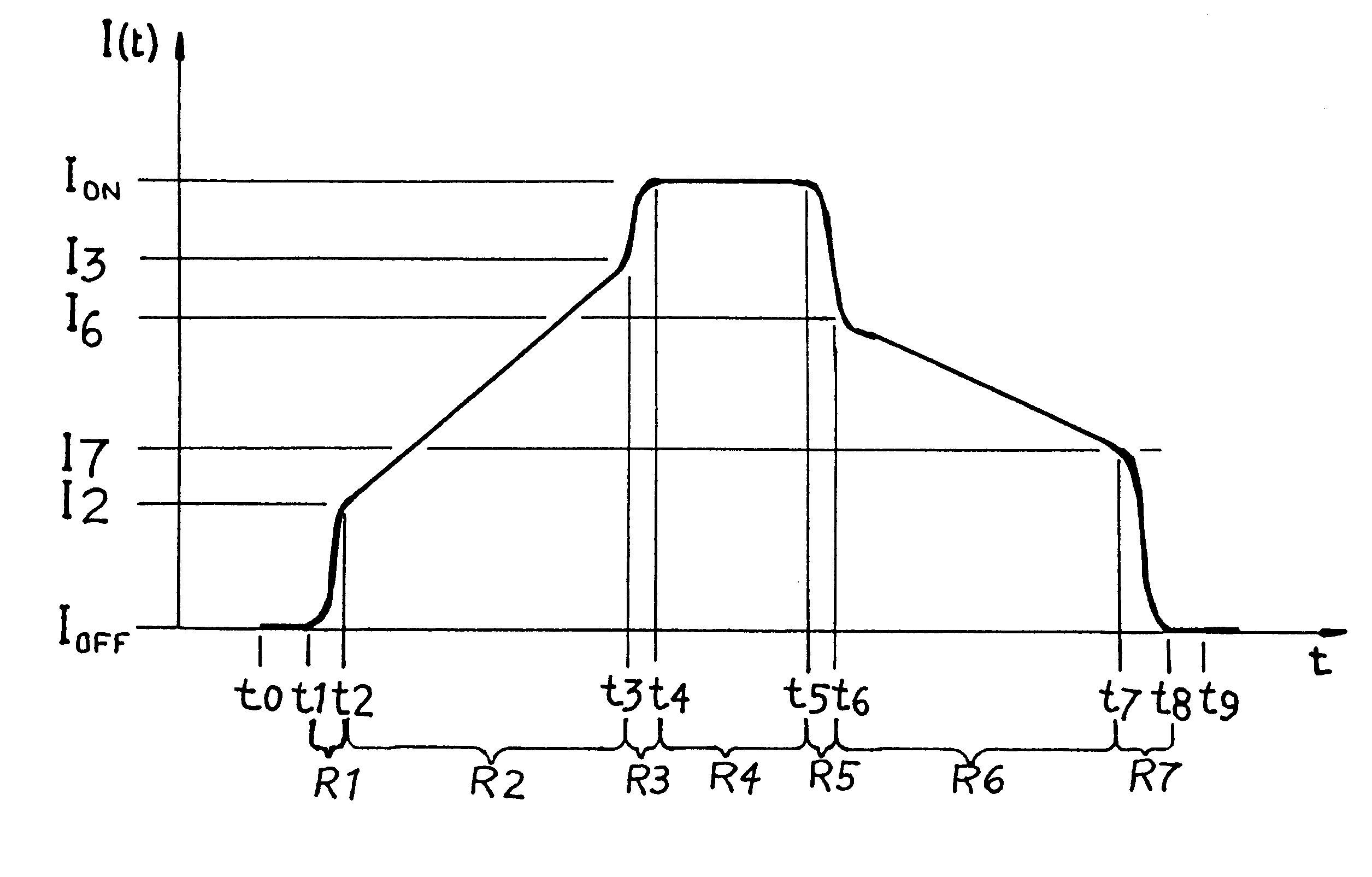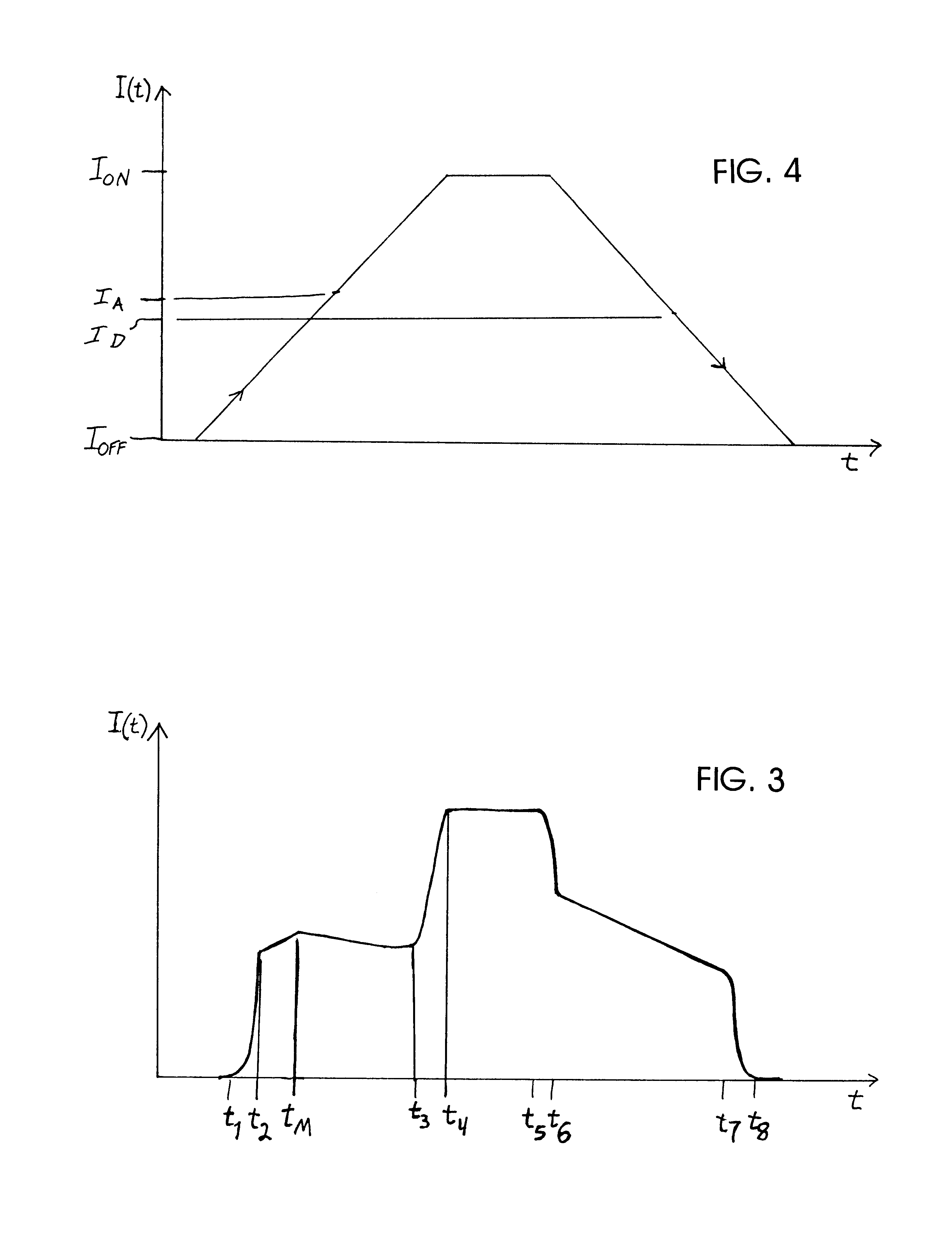Method and circuit arrangement for reducing noise produced by electromagnetically actuated devices
a technology of electromagnetic actuation and circuit arrangement, which is applied in the direction of machines/engines, non-mechanical valves, magnetic bodies, etc., can solve the problems of noise and wear, excessive acceleration and drive of armatures, and excessive transfer and conversion of energy
- Summary
- Abstract
- Description
- Claims
- Application Information
AI Technical Summary
Benefits of technology
Problems solved by technology
Method used
Image
Examples
Embodiment Construction
FIG. 1 schematically shows the time progression of the current that is supplied to and flows through the magnetic coil of an electromagnet of an electromagnetically switch able device such as a relay or a magnetically operable valve. The diagram extends over the operating time of a complete cycle in which the electromagnet is initially at rest, i.e. not actuated, at a time t.sub.0, the electromagnet is then switched to an activated state between time t.sub.1 and t.sub.4, the electromagnet remains in the actuated state from time t.sub.4 to t.sub.5, and then the electromagnet is switched to a deactivated state between times t.sub.5 and t.sub.8 and then remains deactivated at time t.sub.9.
During this cycle, the current applied to the electromagnet varies between a minimum or "off" current, e.g. zero amps, designated by I.sub.OFF, and a maximum actuated current designated by I.sub.ON. The increasing of the applied current from the minimum value I.sub.OFF to the maximum value I.sub.ON ta...
PUM
| Property | Measurement | Unit |
|---|---|---|
| electrical actuating current | aaaaa | aaaaa |
| time | aaaaa | aaaaa |
| current increasing rate | aaaaa | aaaaa |
Abstract
Description
Claims
Application Information
 Login to View More
Login to View More - R&D
- Intellectual Property
- Life Sciences
- Materials
- Tech Scout
- Unparalleled Data Quality
- Higher Quality Content
- 60% Fewer Hallucinations
Browse by: Latest US Patents, China's latest patents, Technical Efficacy Thesaurus, Application Domain, Technology Topic, Popular Technical Reports.
© 2025 PatSnap. All rights reserved.Legal|Privacy policy|Modern Slavery Act Transparency Statement|Sitemap|About US| Contact US: help@patsnap.com



